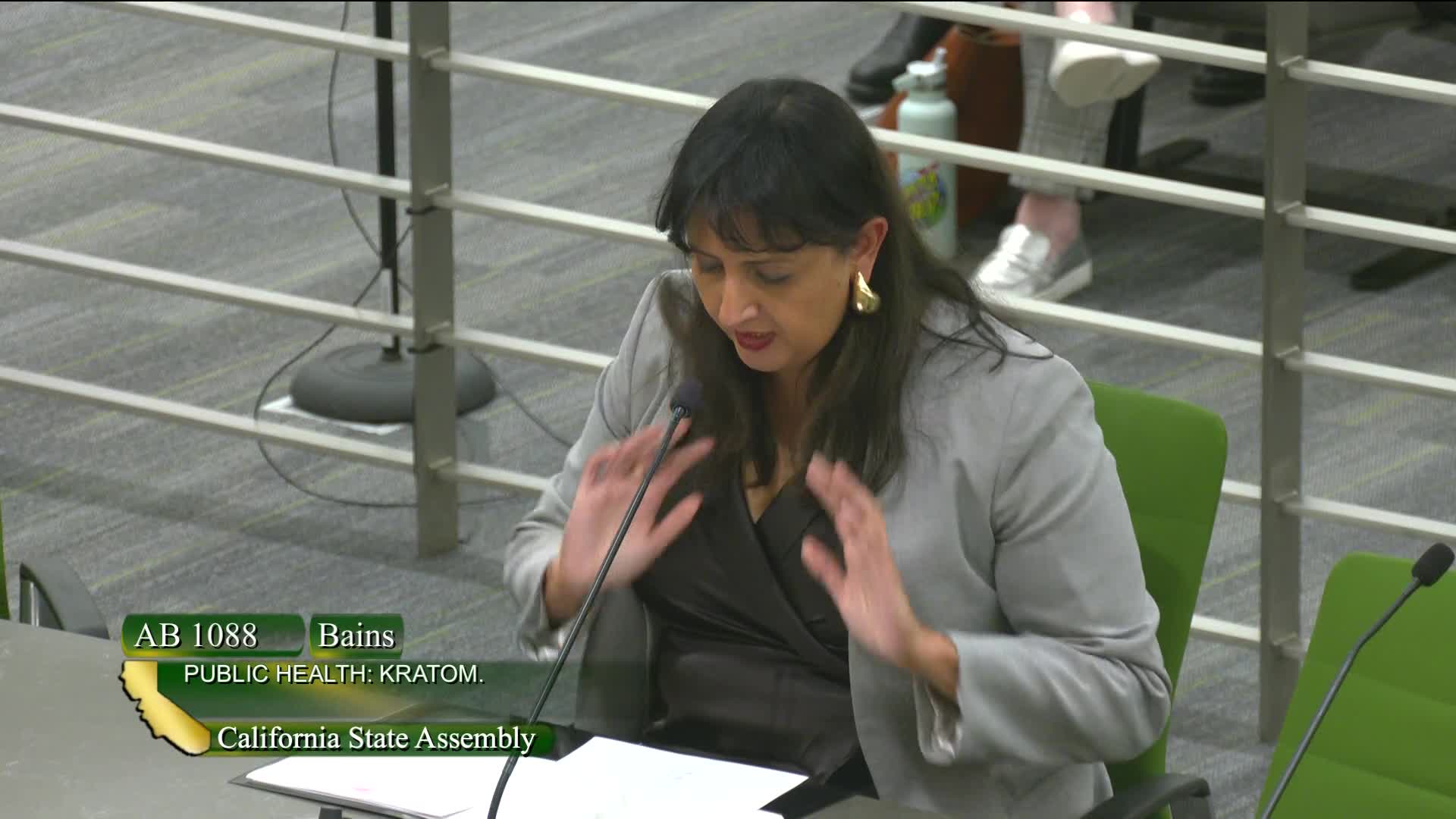California Assembly advances AB 10 88 to regulate kratom sales and protect youth
April 22, 2025 | California State Assembly, House, Legislative, California
Thanks to Scribe from Workplace AI and Family Portal , all articles about California are free for you to enjoy throughout 2025!

This article was created by AI using a video recording of the meeting. It summarizes the key points discussed, but for full details and context, please refer to the video of the full meeting. Link to Full Meeting
Kratom, derived from a tree native to Southeast Asia, has seen a tenfold increase in use in the U.S. between 2010 and 2015, with approximately 1.7 million Americans aged 12 and older reported to have used it in 2021. In California, kratom is readily available in gas stations and convenience stores, often marketed in ways that appeal to children, raising alarms among health officials and lawmakers.
Assembly Bill 1088 seeks to prohibit the sale of kratom products to individuals under 21, require child-resistant packaging, and limit the concentration of the potent alkaloid 7-hydroxymitragynine (7-OH) to no more than 2%. Proponents argue that these measures are essential to protect the developing brains of young people, as exposure to substances with central nervous system effects can lead to substance use disorders later in life.
During the meeting, Assemblymember Bonta emphasized the need for regulation, stating, “This is about protecting our kids and making sure we keep harmful drugs out of the hands of our children.” The bill aims to create a consistent public health framework similar to those governing alcohol and tobacco.
However, the proposal faced significant opposition. Advocates for kratom argued that the bill could stifle a burgeoning industry and push consumers toward more dangerous alternatives. Jackie Sue Beck, a drug policy advocate, claimed that the proposed 2% cap on 7-OH is arbitrary and could harm local businesses. She warned that banning kratom could lead users back to more harmful substances like fentanyl and heroin.
Former law enforcement officer Terry Blevins also voiced concerns, arguing that the bill could inadvertently create opportunities for bad actors to introduce dangerous products into the market. He called for a more measured approach to regulation, emphasizing the importance of research and evidence-based policy.
As the committee deliberated, the tension between public health concerns and economic implications became evident. The discussion underscored the complexities of regulating substances like kratom, which, while used for centuries, has evolved with the introduction of concentrated extracts that pose new risks.
The committee ultimately voted to advance AB 1088 to the next stage, reflecting a commitment to addressing the public health challenges posed by kratom while navigating the competing interests of safety and economic growth. As California moves forward, the implications of this legislation could set a precedent for how similar substances are regulated across the nation.
Converted from Assembly Health Committee (1) meeting on April 22, 2025
Link to Full Meeting
Comments
View full meeting
This article is based on a recent meeting—watch the full video and explore the complete transcript for deeper insights into the discussion.
View full meeting
